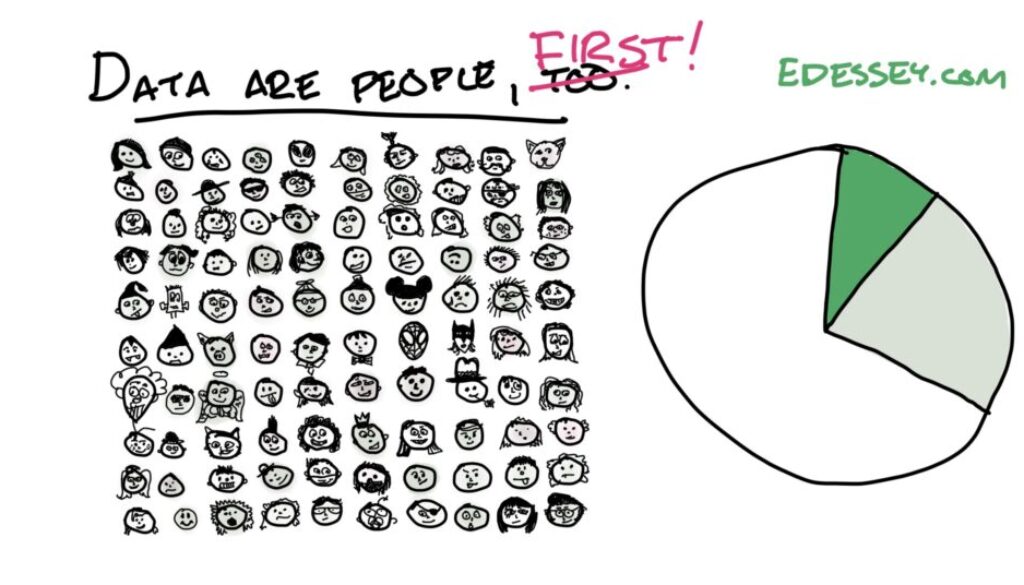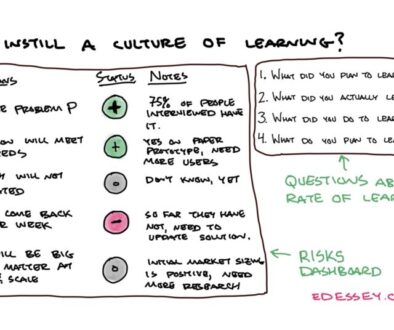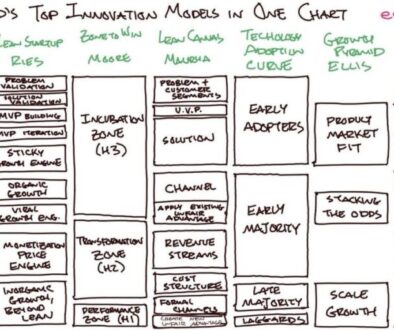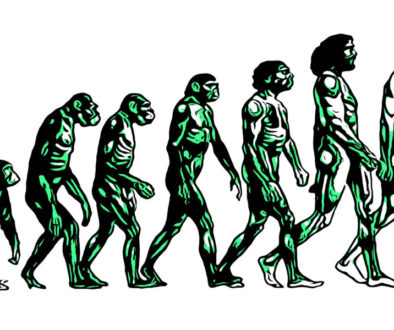Data Are People First
Years ago I heard the line “Data are people, too,” which struck me as very witty, though I instead use the “Data are people first” to draw focus on empathy. For many reasons, it keeps coming to my mind lately. And although there are so many topics that I want to write about, this somehow feels the most important. It has a gravity of it’s own in these times of statistics on the pandemic, institutionalized racism, and the economy — where the numbers tally and, in a way, abstract and distract from the massive impact on people.
Many of the journalists and leaders who are writing about these topics do an amazing job of telling the stories of the people who accrue to the crazy numbers that we see. That’s a very impressive skill. And, it is essential to learn for business people who look to accounting and dashboards to make decisions.
If you’re like many of my readers, you believe that innovation is about creating value, delivering it, and capturing another type of value in return in order to sustain and grow your impact. This means creating value for people, delivering it to those people, and capturing value from people.
So, what does a focus on people mean in terms of what to change in our work?
Adopt practices that promote empathy
I must confess my bias. It’s toward practices that focus on getting to know and feel what others are feeling.
Whenever there is an opportunity to choose an approach, choose the one that generates the most empathy.
The early part of a venture / business / project is best when it is built on empathy. That’s why Empathy is the first phase in the maturity model for incubation projects. It’s why I anchor to the empathy POV in the world’s top innovation models in one chart. Yes, the other terms are about people. Though, for instance, problem validation just sounds too clinical. And, as much as I am biased toward a great procedure, empathy is so difficult and so crucial, that I bias toward empathy in every mechanism, especially early on.
This is why I have a bias against using surveys in the early part of a project. The surveys abstract away the people too much. Even with great verbatim comments, you don’t know the people. You don’t have a follow up conversation — you don’t hear/see the unedited answers. It leads to analysis instead of empathy.
I even have a bias against dogfooding, because that often is about validating some aspect of the solution with the wrong people. The people in your organization, the people who chose to work on this topic for a living, are often askew from the people you will serve. They are at the extreme end of solution-seeking. They are also at the extreme end of bias toward your company and what you offer.
Both dogfooding and surveys have their places and their uses, but they can be counterproductive toward empathy. If you employ them, be careful about how you internalize the information, and ensure that you supplement by talking directly with people in your target audiences.
Here’s a case study of a project team that does this well.
A great example: MirrorHR
In my day job, I help the MirrorHR project working with the Fight the Stroke foundation. Their vision is to reduce the number and severity of seizures in children with epilepsy. Their metric is specifically “families.” Not an abstract notion like users or customers, but families. Their one metric that matters is to track the families that they are helping. And they know the story of every family using their service.
Their focus on empathy is enormous. Every number on their dashboard represents families whom they know personally. Their focus on growth is in growing empathy and compassion for the people whom they serve.
Their daily dashboard is essentially a thermometer of the families they’re helping. They have a systemic approach to their listening systems. And every single number they have in their tracking can be traced to the real life families —the people—who are in their system.
There is also a distinction to draw between empathy and compassion. This comes from a Buddhist point of view. To start, empathy is literally feeling the emotions that the other person feels—whether pain, anger, fear, love, joy, or others. Compassion is about channeling this to do something to alleviate the suffering of those people.
So, they do so many things well. What are practices like this that you can use?
Practices
All organizations—I think it’s safe to say—claim that they focus on people. You hear this in terms like customer-obsession, user-focused, and customer-driven. But what really sets the best apart are their practices, processes, and systems.
Here are some things to practice:
1. Talk to people directly using interviews — don’t hide behind surveys. Surveys have their place, but they are not a substitute for talking to people.
2. Leave the building — don’t use your own organization’s people as proxies for your projects. They won’t help you grow your empathy.
3. Keep your touch high for as long as possible — Grow your number of people served very slowly and carefully. Prioritize knowing and helping fewer people as deeply as possible, before spreading to more people and offering only shallow interaction with them.
4. Pair people’s stories (qualitative data) with the charts and numbers (quantitative data). Bias toward more stories and empathy whenever there is a trade-off to make. Though, also respect their privacy by obfuscating personally identifiable information.
5. Know the people behind your numbers – That isn’t to say flout privacy practices, but try to bring the people to life as much as possible without infringing on their rights for privacy and security.
6. Using the assumptions dashboard to ensure that your people (employees) are focused on doing their best and most valuable work for the people they serve (users and customers).
7. Use systems and rituals like retrospectives to honor and respect the people on their team. This is putting the people of your team first.
8. Have the one metric that matters early on being a direct indicator of your traction in empathy for the people you serve.
9. Make it a regular cadence and practice in your team to have all people on your team talk to the people they serve, and to share the information with each other.
10. Be conscious of your own energy and well-being. Ensure that you build practices for recuperation to not take on the emotional and psychological burdens of the people you and your team talk to. When talking with people about the problems that they face, it is quite possible to lend your energy to them and deplete yourself.
Those are some of mine. What are some of yours? Please let me know in the replies.
If you found this valuable
Please consider subscribing, sharing, and commenting.




Empathy is the Best Path for Innovations in A.I. - Ed Essey
September 22, 2020 @ 9:19 pm
[…] Data Are People First, you can read how to create a culture of empathy-informed business and product creation. It […]
May 19, 2025 @ 4:16 pm
I love it. Empathy is a great term to focus on when “doing things that don’t scale”. The focus on empathy is really clarifying!
I agree that something is off about “Data are People, too” but it sounds off even as “Data are People”. “Soylent Green is People” might share some of the problem.
Maybe these titles would be better? : “People are not Data” (putting people first lexically), or “Empathy-driven Over Data-driven”.